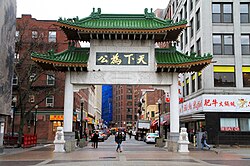
Malden is a city in Middlesex County, Massachusetts, United States. At the time of the 2020 U.S. Census, the population was 66,263 people.

Quincy is a coastal U.S. city in Norfolk County, Massachusetts, United States. It is the largest city in the county and a part of Metropolitan Boston as one of Boston's immediate southern suburbs. Its population in 2020 was 101,636, making it the seventh-largest city in the state. Known as the "City of Presidents", Quincy is the birthplace of two U.S. presidents—John Adams and his son John Quincy Adams—as well as John Hancock, the first signer of the Declaration of Independence and the first and third governor of Massachusetts.

Rockland is a town in Plymouth County, Massachusetts, United States. The population was 17,803 at the 2020 census. As of December 31, 2009, there were 11,809 registered voters in the community.
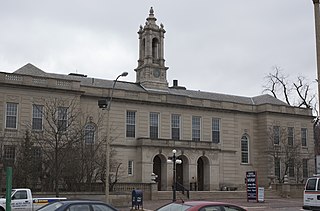
Arlington is a town in Middlesex County, Massachusetts, United States. The town is six miles (10 km) northwest of Boston, and its population was 46,308 at the 2020 census.

Braintree, officially the Town of Braintree, is a municipality in Norfolk County, Massachusetts, United States. Although officially known as a town, Braintree is a city, with a mayor-council form of government, and is considered a city under Massachusetts law. The population was 39,143 at the 2020 census. The city is part of the Greater Boston area with access to the MBTA Red Line, and is a member of the Metropolitan Area Planning Council's South Shore Coalition. The first mayor of Braintree was Joe Sullivan who served until January 2020. The current mayor of Braintree is Erin Joyce, who was elected in 2023, defeating incumbent Charles Kokoros.
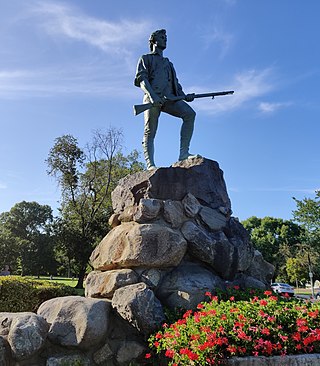
Lexington is a suburban town in Middlesex County, Massachusetts, United States, located 10 miles (16 km) from Downtown Boston. The population was 34,454 as of the 2020 census. The area was originally inhabited by Native Americans, and was first settled by Europeans in 1641 as a farming community. Lexington is well known as the site of the first shots of the American Revolutionary War, in the Battle of Lexington on April 19, 1775, where the "Shot heard 'round the world" took place. It is home to Minute Man National Historical Park.

Greater Boston is the metropolitan region of New England encompassing the municipality of Boston, the capital of the U.S. state of Massachusetts and the most populous city in New England, and its surrounding areas. The region forms the northern arc of the Northeast megalopolis, making Greater Boston both a metropolitan statistical area (MSA) and a combined statistical area (CSA). The most stringent definition of the region consists of most of the eastern third of mainland Massachusetts, excluding the Merrimack Valley and South Coast; while the most expansive definition includes these plus Cape Cod, Central Massachusetts, Rhode Island, southeastern New Hampshire, and Windham County, Connecticut.
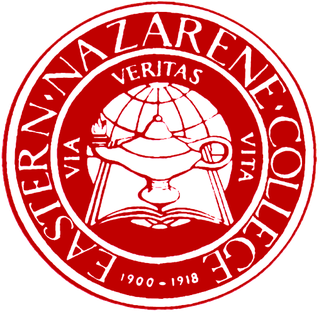
The Eastern Nazarene College (ENC) is a private, Christian college in Quincy, Massachusetts. Established as a holiness college in Quincy, Massachusetts, in 1900, the college moved to Rhode Island for several years. With its expansion to a four-year curriculum, it relocated to Wollaston Park in 1919. It has expanded to additional sites in Quincy and, since the late 20th century, to satellite sites across the state. Its academic programs are primarily undergraduate, with some professional graduate education offered.

Chinatown, Boston is a neighborhood located in downtown Boston, Massachusetts. It is the only surviving historic ethnic Chinese enclave in New England since the demise of the Chinatowns in Providence, Rhode Island and Portland, Maine after the 1950s. Because of the high population of Asians and Asian Americans living in this area of Boston, there is an abundance of Chinese and Vietnamese restaurants located in Chinatown. It is one of the most densely populated residential areas in Boston and serves as the largest center of its East Asian and Southeast Asian cultural life.

Quincy College (QC) is a public community college in Quincy, Massachusetts. It is an open admission commuter school that offers associate degrees, bachelor degrees, and certificate programs. It was founded in 1958 and enrolls approximately 4,500 students at campuses in Quincy and Plymouth, Massachusetts.

Belmont High School is a four-year public high school in Belmont, Massachusetts, United States. The school had 1,364 students enrolled and a student/teacher ratio of 16.3:1 in the 2022–2023 school year.

Kam Man Food is a Chinese supermarket chain with its corporate headquarters in Edison, New Jersey, United States.
North Quincy is a neighborhood of Quincy, Massachusetts. It is separated from the city of Boston by the Neponset River, and borders the Quincy neighborhoods of Squantum, Montclair and Wollaston. It contains the smaller neighborhoods of Atlantic and Norfolk Downs, as well as much of Wollaston Beach.
North Quincy High School (NQHS) is a public secondary school located in the North Quincy neighborhood of Quincy, Massachusetts, United States. The school serves grades 9 through 12, and has an enrollment of over 1,200 students. It is one of two public high schools in the city—the other being Quincy High School. The school's mascot is known as "Yakoo", and its school colors are red and black.

Quincy Point is a neighborhood of Quincy, Massachusetts. "The Point" is generally defined as the land east of Quincy Center, the downtown district. Quincy Point is bordered on the west by Elm Street, on the east by Weymouth Fore River and the Braintree city line, on the north by Town River and on the south by Quincy Avenue. The area altitude averages about 30 feet (9.1 m) above sea level. The population of this neighborhood in 2000 was 11,414.
The Spirit of Adventure Council is a regional council of the Boy Scouts of America. It serves the greater Boston, Massachusetts, area.
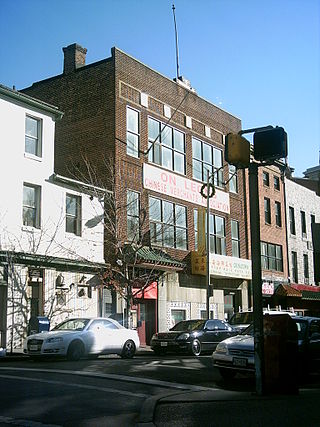
The U.S. city of Baltimore, Maryland is home to a small Chinatown. Historically, Baltimore had at least two districts that were called "Chinatown" where the first one existed on the 200 block of Marion Street during the 1880s. A second and current location is at the 300 block of Park Ave., which was dominated by laundries and restaurants. The initial Chinese population came because of the transcontinental railroad, however, the Chinese population never exceeded 400 as of 1941. During segregation, Chinese children were classified as "white" and went to the white schools. Chinatown was largely gone by the First World War due to urban renewal. Although Chinatown was largely spared from the riots of the 1960s, most of the Chinese residents moved to the suburbs. As of 2009, the area still shows signs of blight and does not have a Chinese arch. As of 2017, the area has become an “immigration hub” for Ethiopian people. In 2018, a mural of a Chinese dragon and an African lion was painted to signify the past as a Chinatown and the present as an African neighborhood. A night market in September 2018 marked the first Asian celebration of the area to an area that was “long forgotten and neglected”.
Hong Kong Americans, include Americans who are also Hong Kong residents who identify themselves as Hong Kongers, Americans of Hong Kong ancestry, and also Americans who have Hong Kong parents.

There is a Vietnamese American population in Boston. As of 2012 Boston has the largest group of ethnic Vietnamese in the state. Other groups of Vietnamese are in Braintree, Chelsea, Everett, Lynn, Malden, Medford, Quincy, Randolph, Revere, and Weymouth. Vietnamese also live in more distant cities in the Boston combined statistical area and the area around Boston: Attleboro, Brockton, Fall River, Haverhill, Methuen, Lowell and Worcester.
Kwong Kow Chinese School is a supplementary school located in Chinatown, Boston. Founded in 1916 for immigrants in Chinatown, as Qwong Kow Chinese School, it has offered classes for not only members of the local Chinese American community, but immigrant children from Hong Kong, Taiwan, the Philippines, Cambodia, and Vietnam. In 2007, it moved into its permanent home at the Chinese Community Education Center, after many years of moving around Chinatown.
